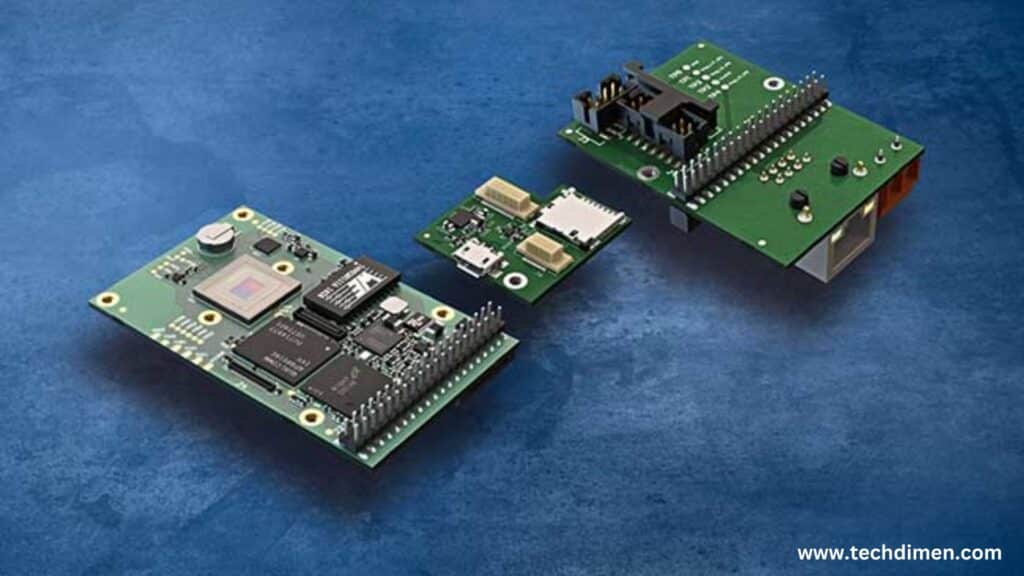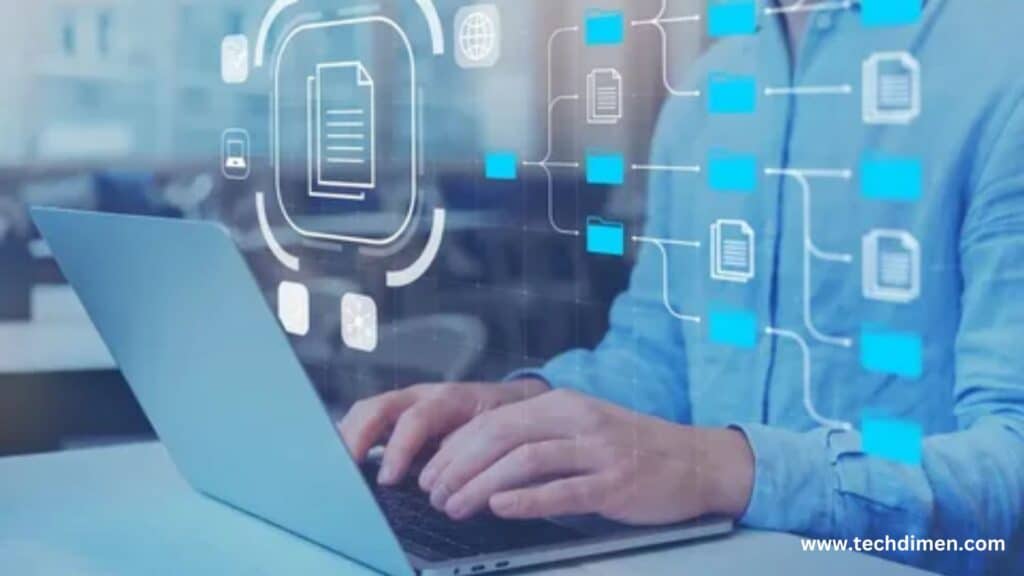Managing software assets today goes far beyond just keeping a list of licenses. SAM technology, or Software Asset Management, has transformed how organizations control, optimize, and secure their software investments. This detailed guide breaks down how SAM technology works, why it matters, and how it’s shaping the future of IT asset management.
What Exactly Is SAM Technology? Breaking Down the Basics

At its heart, SAM technology refers to software that helps businesses manage their software licenses, ensure compliance, and monitor usage effectively. Unlike traditional asset tracking, which might cover hardware broadly, SAM zeroes in specifically on software tracking licenses, usage patterns, and compliance status with precision.
When defining Software Asset Management, it means keeping an accurate inventory of all software installed across devices and servers, closely monitoring license usage to avoid overspending or penalties, maintaining compliance with vendor agreements and industry regulations, and optimizing software spend by uncovering unused or underused licenses. SAM technology automates many of these processes, providing real-time visibility into a company’s software landscape.
SAM fits into IT and business operations by bridging the gap between IT asset management (ITAM) and financial governance. While ITAM involves both hardware and software, SAM focuses specifically on managing the software lifecycle from procurement to retirement. When integrated with procurement systems and IT service management (ITSM) platforms, SAM ensures software assets align closely with the company’s operational needs, budgets, and compliance requirements.
Why does SAM matter? The answer lies beyond mere inventory tracking. Neglecting software license compliance can expose businesses to massive financial risks. For instance, in 2023, research showed companies facing an average penalty of $3.6 million due to software license violations. SAM technology not only prevents these costly risks but also helps organizations cut unnecessary expenses by optimizing software use.
How SAM Technology Transforms Asset Management Today
SAM technology revolutionizes how companies oversee their software portfolios by delivering real-time asset visibility and control. Modern SAM tools continuously scan corporate networks and endpoints, providing an up-to-date inventory of installed software. This instant access allows IT teams to detect unauthorized software installations promptly, track software usage trends accurately, and identify potential license shortages or excesses without delay.
Cost reduction happens naturally when organizations optimize license usage. Unused licenses represent wasted budget, but SAM systems analyze usage patterns to recommend reclaiming those licenses. Businesses often save between 20 to 30 percent on their software budgets by reallocating or canceling these licenses. This financial benefit is one of the most compelling reasons companies invest in SAM software.
Compliance improvement is another crucial benefit. Software audits can be daunting, often involving a maze of documentation and negotiations. SAM technology simplifies the audit process by maintaining accurate records, tracking license entitlements, and flagging compliance risks well before auditors arrive. This proactive approach reduces the stress and financial risks associated with software audits.
Core Components and Features of Modern SAM Systems

SAM technology includes several essential features that make asset management smarter and more efficient.
One key component is automated asset discovery, where the software scans the IT environment to detect all installed applications automatically. This eliminates the errors that come with manual tracking and keeps the inventory accurate at all times.
License management and usage monitoring are also vital. These features track license entitlements and how software is being used, ensuring organizations do not exceed their agreements or leave money on the table by underusing licenses.
Another important feature is integration with IT service management platforms. This connection helps streamline workflows by aligning software asset data with IT tickets, procurement processes, and service requests.
Reporting and analytics provide detailed insights into software usage, costs, and compliance. Dashboards allow IT and finance teams to make data-driven decisions, helping prioritize renewals, audits, or reallocations.
Finally, software lifecycle management manages every stage of software use, from acquisition through deployment to retirement. This holistic view improves asset utilization and ensures outdated or unused software doesn’t linger, creating security or compliance risks.
Varieties of SAM Solutions: Choosing What Fits Your Business
SAM solutions come in various forms, and picking the right one depends heavily on your organization’s size, industry, and existing IT setup.
When deciding between cloud-based SAM and on-premises systems, each has distinct advantages. Cloud-based SAM platforms deploy quickly without requiring extensive local infrastructure and scale easily as your business grows. They typically operate on a subscription model, making costs predictable. However, you depend on the vendor’s security protocols and internet connectivity.
On-premises SAM systems offer greater control since they run within your own infrastructure. This option can be preferable if your organization handles sensitive data or must comply with strict security standards. On the downside, deploying and maintaining these systems requires more IT resources and upfront investment.
Hybrid models are gaining popularity because they combine the strengths of both cloud and on-premises approaches. They let companies keep sensitive assets behind their firewall while enjoying the scalability and flexibility of the cloud for other functions.
Artificial intelligence is also entering the SAM space. AI-driven automation promises smarter license usage analysis and anomaly detection. While still evolving, these capabilities can automate license reclamation, forecast usage, and identify risks ahead of compliance audits, making SAM tools increasingly proactive.
Different industries have unique SAM requirements. For example, healthcare organizations need SAM solutions compliant with HIPAA and capable of managing medical software licenses. Financial institutions focus on regulatory audits and data security, while manufacturing firms handle complex environments with embedded software on machinery and control systems. Selecting a SAM solution tailored to your industry ensures you meet specific regulatory and operational needs.
How to Evaluate and Select the Best SAM Technology

Choosing the right SAM software means balancing many factors. Scalability is crucial; the tool must grow with your business. Usability also matters a user-friendly interface reduces training time and helps IT and finance teams work together effectively. Vendor support is another key consideration; prompt and knowledgeable customer service can save time and headaches. Integration capabilities are essential as well. Your SAM software should connect smoothly with existing ITSM and ERP systems to avoid creating data silos.
In 2025, top-rated SAM tools include Flexera, known for its comprehensive license management and analytics; Snow Software, which excels in automated asset discovery; ServiceNow SAM, prized for seamless ITSM integration; and Ivanti, which offers strong compliance and risk management features. Pricing models vary from subscription-based to tiered or modular options, allowing companies to pick what suits their budgets and needs.
Implementing SAM technology typically delivers a return on investment within six to twelve months by cutting software waste and avoiding costly audit penalties. Initial costs range widely, from $50,000 for smaller setups to $250,000 or more for enterprise deployments, but the long-term savings often justify the expense.
Real-world case studies highlight SAM’s impact. One global retailer saved $2 million by reclaiming underused licenses after deploying a cloud-based SAM solution. A major hospital improved compliance and passed a tough regulatory audit with flying colors by using SAM software to prepare and maintain accurate software inventories.
Overcoming Common SAM Implementation Challenges
Even with great technology, SAM implementation isn’t without challenges. Data quality and accuracy are critical—poor data means poor decisions. Automated asset discovery tools and continuous validation help maintain high data integrity.
Integrating SAM with existing IT infrastructure requires careful planning. Especially when connecting to ITSM and procurement systems, a phased rollout helps uncover and fix issues early.
User training and adoption make or break SAM success. Without proper training, staff may bypass the system or input inaccurate data. Investing in clear policies and education encourages consistent use and maximizes the tool’s benefits.
Finally, keeping SAM efficient as your organization grows means regularly reviewing processes and updating policies. Scaling your technology stack thoughtfully avoids bottlenecks and ensures SAM continues to deliver value.
Emerging Trends Shaping the Future of SAM Technology
Looking ahead, predictive analytics is transforming SAM by using historical data to forecast license demand. This enables companies to plan purchases smarter and avoid surprises in budgeting.
The Internet of Things (IoT) is expanding the SAM landscape. With millions of smart devices entering corporate networks, SAM technology must evolve to manage embedded software licenses and compliance risks associated with these connected gadgets.
Sustainability is also entering the conversation. Organizations increasingly leverage SAM to reduce software waste and energy consumption, aligning asset management with green IT initiatives that support environmental goals.
Finally, regulatory environments continue to evolve rapidly. New data privacy laws and software compliance regulations challenge organizations to adapt. SAM technology helps companies stay ahead by adjusting policies, automating compliance workflows, and preparing for audits efficiently.
SAM Technology
| Category | Details | Benefits |
|---|---|---|
| What It Does | Manages software licenses and usage | Saves costs, ensures compliance |
| Solution Types | Cloud-based, On-premises, Hybrid | Flexibility and control |
| Key Features | Automated discovery, license tracking, reporting | Real-time insights, audit-ready |
| Integration | Works with ITSM and procurement systems | Smoother workflows |
| Challenges | Data accuracy, integration, user adoption | Needs training, careful setup |
| Trends | Predictive analytics, IoT, green IT | Proactive management, eco-friendly |
| Top Vendors (2025) | Flexera, Snow Software, ServiceNow, Ivanti | Strong features, varied pricing |
FAQs
What is SAM Technology?
SAM Technology refers to software tools and systems designed to manage, track, and optimize software licenses and usage within an organization, ensuring compliance and cost efficiency.
Why is Software Asset Management important?
Proper Software Asset Management helps businesses avoid costly license penalties, optimize software spend, improve IT visibility, and streamline audits, reducing risk and boosting ROI.
What types of SAM solutions are available?
SAM solutions typically come as cloud-based platforms, on-premises software, or hybrid models that combine both, catering to different business needs and security preferences.
How does SAM technology help with software license compliance?
SAM tools continuously monitor software installations and usage against license entitlements, alerting organizations to overuse or unauthorized installations to maintain compliance.
Can SAM technology integrate with existing IT systems?
Yes, most SAM tools integrate with IT Service Management (ITSM), procurement, and ERP systems to provide seamless asset tracking and management across platforms.
What challenges should I expect when implementing SAM?
Common challenges include ensuring data accuracy, integrating with current infrastructure, and encouraging user adoption through training and clear policies.
How much can a company save with SAM technology?
On average, companies save 20-30% on software costs by reclaiming unused licenses and avoiding compliance fines after implementing SAM solutions.
What are emerging trends in SAM technology?
Predictive analytics, Internet of Things (IoT) integration, and sustainability-focused asset management are shaping the future of SAM tools and practices.
Which industries benefit most from SAM?
Industries like healthcare, finance, manufacturing, and government benefit greatly due to regulatory requirements and complex software environments.
Conclusion
Mastering SAM technology means taking control of your software assets to reduce costs, avoid compliance risks, and streamline IT operations. As software ecosystems grow more complex, smart asset management tools become indispensable. By understanding key features, choosing the right solution, overcoming implementation hurdles, and embracing emerging trends, your organization will be well-positioned to manage software assets effectively and confidently.

Jhon AJS is a tech enthusiast and author at Tech Dimen, where he explores the latest trends in technology and TV dimensions. With a passion for simplifying complex topics, Jhon aims to make tech accessible and engaging for readers of all levels.







